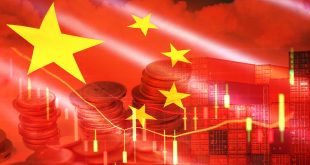Despite resolute US PPI data that heightens doubts about September Fed rate cuts, the EUR/USD pair rises just above 1.0800. April’s US annual PPI beat forecasts and monthly data exceeded expectations.
With service inflation moderating to 3.7%, the Eurozone Price Index is expected to reach 2% again soon. In the early American session of Tuesday, the EUR/USD pair moves marginally over the 1.0800 round-level resistance level.
Despite persistent resistance in the United States, Producer Price Index (PPI) data for April, the major currency pair continues to gain. As expected, the monthly headline and core PPI increased by 0.5% and 0.3%, respectively, according to the US Bureau of Labour Statistics (BLS).
Annual growth for the headline and core PPI was 2.2% and 2.4%, respectively, in line with predictions. Investor confidence in the Federal Reserve’s (Fed) decision to begin lowering interest rates at its September meeting is predicted to be damaged by hot PPI data.
Investors will be watching the US Consumer Price Index (CPI) for April, which is released on Wednesday, for additional clarity. Fed Chair Jerome Powell stated that the US PPI report is generally mixed after it was released. When asked about the outlook for interest rates, Powell played down concerns about a rate hike but stressed the need to keep rates where they are for a longer period of time in order to reduce inflation.
The goal for EUR/USD is to close above 1.0800, a critical resistance level. The US Dollar declines despite a stronger-than-expected US PPI report, which has fueled strong rumours that the Fed would begin cutting interest rates at its September meeting. Despite this, the key currency pair continues to rise.
The US Dollar Index, which measures the value of the US dollar relative to six major world currencies, dips below the critical level of 105.00. Investors will be concentrating on the April consumer inflation data in order to gain additional information. The main event of the week will be the US consumer inflation statistics. The tight labour market and strong household spending in the first quarter of the year contributed to the US CPI staying higher than anticipated.
Investor attention will be focused on it because traders will be forced to reduce their bets on September Fed rate reduction if hot readings continue to be released. Warm inflation data will also counter the Fed’s rate-cutting confidence, which was predicated on improving labour market conditions. Investors on the other side of the Atlantic are waiting for the release of the preliminary Q1 GDP statistics for the Eurozone on Wednesday.
It is anticipated that GDP growth increased steadily. The estimated growth rates for the quarterly and annualized GDP are 0.3% and 0.4%, respectively. Policymakers of the European Central Bank (ECB), who intend to begin reducing borrowing rates at their June meeting, would be relieved by positive GDP growth.
Price pressures in the Eurozone economy are expected to stabilize at the targeted 2% pace, since the service inflation rate, which was stable at 4% from November to March, dropped significantly to 3.7% in April. The ECB is expected to lower interest rates by 70 basis points (bps) this year, according to financial markets’ expectations.
 Noor Trends News, Technical Analysis, Educational Tools and Recommendations
Noor Trends News, Technical Analysis, Educational Tools and Recommendations





